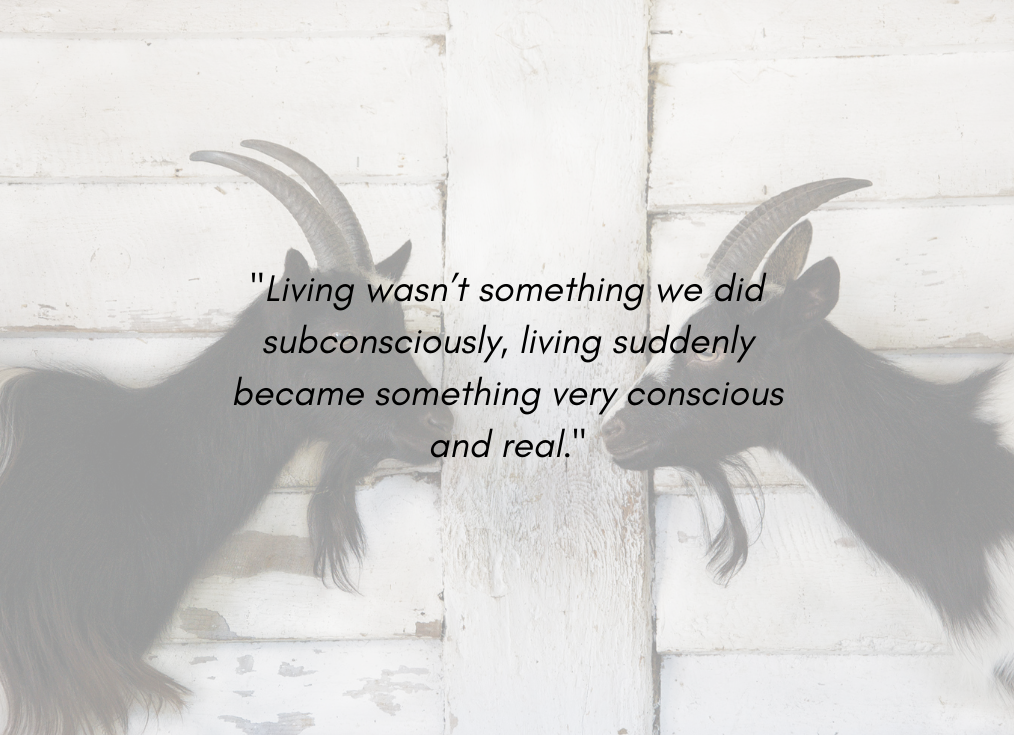The Two Goats and Yom Kippur

September 25, 2020
I don’t remember the exact Yom Kippur service when I became aware of the ancient story of the two goats sacrificed in recognition of this solemn day during Temple times. I do remember thinking about the fairness of each goat’s destiny, and of the random luck assigned to the decision-making process. To recap the story, two identical he-goats were randomly selected for the ritual sacrifice, one goat for the alter and the other to be sent to its fate to Azazel. The latter goat was sent to this desert location outside of the city walls where he would eventually walk off the cliff and perish as he fell to the valley below.
There is plenty of rabbinic discourse about the meaning behind the randomness of the selections, and in-turn the related metaphors about life and death, good and evil, and reward and punishment. However, in the 21st Century, in Western society, in a world where “community” is being redefined on a daily basis, I cannot shake the image of these two goats living side by side for their entire lives only to be selected one day for their sacrificial destiny. One goat was chosen to be honored, revered, and elevated as a gift to Gd, and the other chosen to receive the sins of the people, discarded, and left to die alone.
Yom Kippur is the holiday that challenges us to face the concept of death. It literally provides us passages to read on our individual fragility and the many ways people die. I have heard congregants over the years complain about the holiday’s morbidity and alleged attempt to scare people into following the religious doctrine.
However, for the first time in my life, I am seeing this holiday with a sense of optimism and opportunity.
…
A few weeks ago I had the privilege to hear Rabbi Lord Jonathan Sacks speak about his newest book on Morality. I knew he would be inspirational; that he would speak to our need to come together at this critical time in history. I knew his wisdom would be profound, and his perspectives deep and insightful. But what I was not expecting to still be reflecting on was his story about his near-death experience. When Rabbi Sacks concluded his reflection, he shared that when someone comes that close to death, life finds new meaning. All of a sudden, every second of every hour of every day is a gift. To paraphrase Rabbi Sacks, it was as if a switch was flipped. Living wasn’t something we did subconsciously, living suddenly became something very conscious and real.
Likewise, the goats of our Yom Kippur story should be examples to awaken us. Not that one is lucky and honored and the other unlucky and discarded, as both end with the same ultimate fate. Rather, the “lucky” goat represents our state of awareness to what we can and should do with our lives, and the other “unlucky” goat as our state of ignorance and unconsciousness.
We are living in a time where our unconscious biases are becoming conscious. Many of us are struggling with the realization that, although unintended and involuntary, we have been, in the words of Elie Wiesel z”l, indifferent. As we stand praying this Yom Kippur to be inscribed in the Book of Life, let us also pray to live our lives with full awareness and consciousness. Let us pray to build a community that does not treat others differently based on color, class, religion, or political ideology. Rather, let us build community grounded on respect, dignity, and common decency.
The Jewish Federation of San Antonio is
HERE for you.
HERE for our community.
HERE for our future.
Shabbat shalom and g’mar chatimah tovah,

